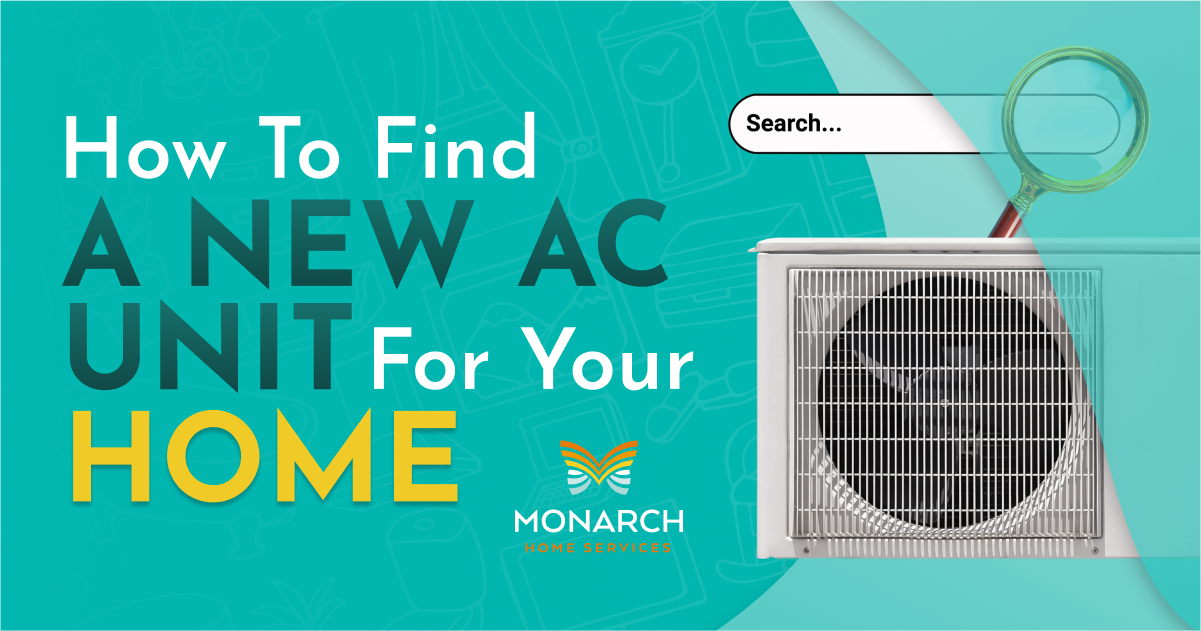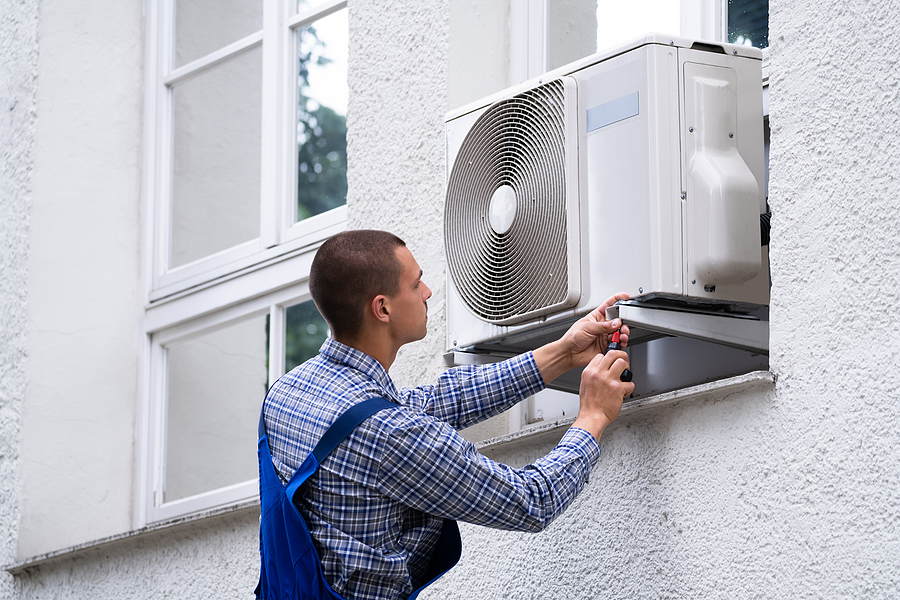How To Get A New Ac Unit With Bad Credit

Let's face it: waking up to a broken air conditioner, especially during the peak of summer, is a homeowner's nightmare. The discomfort is immediate, and the thought of a costly replacement can be incredibly stressful. While sometimes a simple fix is all you need, there are times when a new AC unit is unavoidable. This article will guide you through troubleshooting your AC and, if necessary, explore options for getting a new one even with bad credit.
Part 1: Troubleshooting Your Existing AC Unit
Before jumping to the conclusion that you need a brand new AC, let's try some basic troubleshooting. Remember, safety first! If you're uncomfortable with any of these steps, or if you suspect a major issue, call a qualified HVAC technician immediately.
Step 1: Basic Checks - Power and Settings
Start with the most obvious culprits. These are often overlooked but can save you a lot of hassle.
- Check the Thermostat: Is it set to "Cool" and at a temperature lower than the current room temperature? Make sure it's not in "Heat" or "Fan Only" mode. Also, ensure the thermostat is powered on and the batteries (if applicable) are fresh.
- Inspect the Circuit Breaker: Locate the circuit breaker for your AC unit in your electrical panel. If it's tripped (switched to the "off" position), flip it all the way to the "off" position, then back to the "on" position. This can reset the system and resolve minor power surges.
- Examine the Power Cord: If you have a window unit or a portable AC, check the power cord for any visible damage like cuts or fraying. If you see any damage, do not use the unit and consult a professional.
- Air Filter: A dirty air filter restricts airflow, making your AC work harder and potentially causing it to overheat or freeze up. Replace the air filter regularly (usually every 1-3 months) with a clean one. The filter is typically located behind a removable panel on the indoor unit.
Step 2: Outdoor Unit Inspection (Condenser)
The outdoor unit, also known as the condenser, is crucial for cooling. Ensure it's not obstructed and is getting adequate airflow.
- Clear Debris: Remove any leaves, branches, grass, or other debris that may be blocking the condenser unit. A clear area of at least two feet around the unit is recommended.
- Check the Fins: The condenser fins (the thin metal plates surrounding the unit) can become bent or damaged. You can carefully straighten them with a fin comb, available at most hardware stores. Be gentle to avoid further damage.
- Listen for Unusual Noises: Pay attention to any strange noises coming from the condenser unit, such as rattling, grinding, or buzzing. These sounds could indicate a serious problem that requires professional attention.
Step 3: Indoor Unit Inspection (Evaporator)
The indoor unit, or evaporator coil, cools the air that is circulated throughout your home.
- Check for Ice Buildup: Ice on the evaporator coil can prevent proper cooling. This can be caused by a refrigerant leak, a dirty air filter, or a malfunctioning blower motor. If you see ice, turn off the AC and allow the ice to melt completely. Then, try restarting the AC after cleaning the air filter. If the ice returns, call a qualified HVAC technician.
- Inspect the Blower Motor: The blower motor circulates air through the evaporator coil. If the motor is not working, the air will not be cooled. You can usually hear the blower motor running when the AC is on. If you don't hear it, or if it's making unusual noises, it may need to be replaced. This is usually a job for a professional.
- Drainage Issues: Check the condensate drain line for clogs. This line removes moisture that condenses on the evaporator coil. A clogged drain line can cause water damage. You can try clearing the drain line with a wet/dry vacuum or a stiff wire.
When to Call a Professional
While some AC problems can be fixed with simple DIY solutions, others require the expertise of a qualified HVAC technician. Never attempt repairs that involve electricity, gas, or complex parts unless you are properly trained and licensed. Here are some situations where you should always call a professional:
- Refrigerant Leaks: Refrigerant is a hazardous substance, and leaks can be harmful to the environment and your health. Only a licensed technician can safely handle refrigerant.
- Electrical Issues: Any electrical problems, such as faulty wiring or a malfunctioning compressor, should be handled by a qualified electrician or HVAC technician.
- Compressor Problems: The compressor is the heart of your AC unit, and it's a complex and expensive component. If you suspect a problem with the compressor, call a professional immediately.
- Gas Leaks: If you smell gas near your AC unit, evacuate the area immediately and call your gas company or the fire department.
- You're Uncomfortable: If at any point during the troubleshooting process you feel uncertain or uncomfortable, it's always best to err on the side of caution and call a professional.
Part 2: Getting a New AC Unit With Bad Credit
If you've exhausted all troubleshooting options and your AC unit is still not working, or if it's simply too old and inefficient, it may be time for a replacement. However, getting a new AC unit with bad credit can be challenging. Here's a breakdown of your options:
Understanding Your Credit Situation
The first step is to honestly assess your credit score. You can obtain free credit reports from AnnualCreditReport.com. Knowing your credit score will help you understand which financing options are realistic.
Also, dispute any errors on your credit report. Even small errors can negatively impact your score.
Financing Options
Here are several financing options you can explore, keeping in mind that interest rates will likely be higher with bad credit.
- HVAC Company Financing: Many HVAC companies offer financing options to their customers. These programs may have more lenient credit requirements than traditional lenders, but carefully review the terms and interest rates. Some offer options specifically for those with less-than-perfect credit. Look for companies that work with multiple lenders.
- Personal Loans: Personal loans can be used for almost any purpose, including home improvements. While interest rates may be higher for borrowers with bad credit, they may still be lower than other options, such as credit cards. Shop around and compare offers from different lenders, including online lenders and credit unions.
- Credit Cards: Using a credit card to finance a new AC unit is generally not recommended due to high interest rates. However, if you have a credit card with a low introductory APR or a rewards program that you can leverage, it might be an option for a small portion of the cost. Make sure you can pay off the balance quickly to avoid accumulating high interest charges.
- Home Equity Loan or HELOC: If you own your home and have equity, you may be able to qualify for a home equity loan or a home equity line of credit (HELOC). These options typically offer lower interest rates than unsecured loans, but they also put your home at risk if you are unable to repay the loan. Proceed with caution and consult with a financial advisor before using your home as collateral.
- Government Programs and Grants: Explore government programs and grants that may offer assistance with energy-efficient upgrades, including AC replacements. The Database of State Incentives for Renewables & Efficiency (DSIRE) is a good resource for finding programs in your area.
- Energy-Efficient Mortgages (EEMs): If you are purchasing a home or refinancing your mortgage, you may be able to include the cost of a new energy-efficient AC unit in your mortgage. An EEM allows you to finance energy-efficient improvements as part of your home loan.
- Rent-to-Own Options: Some companies offer rent-to-own programs for appliances, including AC units. These programs typically have very high interest rates and fees, so they should be considered a last resort. Carefully read the terms and conditions before signing any agreement.
Negotiating with HVAC Companies
Regardless of how you finance your new AC unit, negotiating with HVAC companies is crucial. Get quotes from multiple companies and compare prices, warranties, and installation costs. Don't be afraid to negotiate for a better price. Here are some tips:
- Get Multiple Quotes: Obtain at least three quotes from different HVAC companies.
- Compare Apples to Apples: Make sure the quotes are for similar models and installation services.
- Ask About Discounts: Inquire about any available discounts, such as senior citizen discounts, military discounts, or seasonal promotions.
- Negotiate the Price: Don't be afraid to negotiate the price. You may be able to get a lower price by offering to pay in cash or by pointing out a lower quote from a competitor.
- Check for Rebates: Ask about manufacturer rebates or utility rebates that may be available for energy-efficient AC units.
- Consider a Smaller Unit: A smaller, more efficient unit might adequately cool your home, saving you money on the purchase price and energy bills. Have an HVAC professional assess your needs.
- Ask about Refurbished Units: Some HVAC companies offer refurbished AC units at a lower price. Make sure the unit comes with a warranty.
Improving Your Credit Score
While you're exploring financing options, take steps to improve your credit score. Even a small improvement in your credit score can make a big difference in the interest rates you qualify for.
- Pay Bills on Time: Make all your payments on time, every time.
- Reduce Credit Card Debt: Pay down your credit card balances as much as possible.
- Avoid Opening New Accounts: Opening too many new accounts can negatively impact your credit score.
- Check Your Credit Report Regularly: Monitor your credit report for errors and dispute any inaccuracies.
Long-Term Considerations
Beyond the immediate need for a new AC unit, consider the long-term implications. A more energy-efficient unit can significantly reduce your energy bills, saving you money over time. Research the SEER rating (Seasonal Energy Efficiency Ratio) of different models. A higher SEER rating indicates greater energy efficiency.
Conclusion
A broken AC unit can be a major headache, but it doesn't have to be a financial disaster. By following the troubleshooting steps outlined in this article, you may be able to fix the problem yourself. If a replacement is necessary, explore all your financing options and negotiate with HVAC companies to get the best possible price. And remember, improving your credit score is a long-term investment that can benefit you in many ways, including making it easier to finance essential home repairs.










